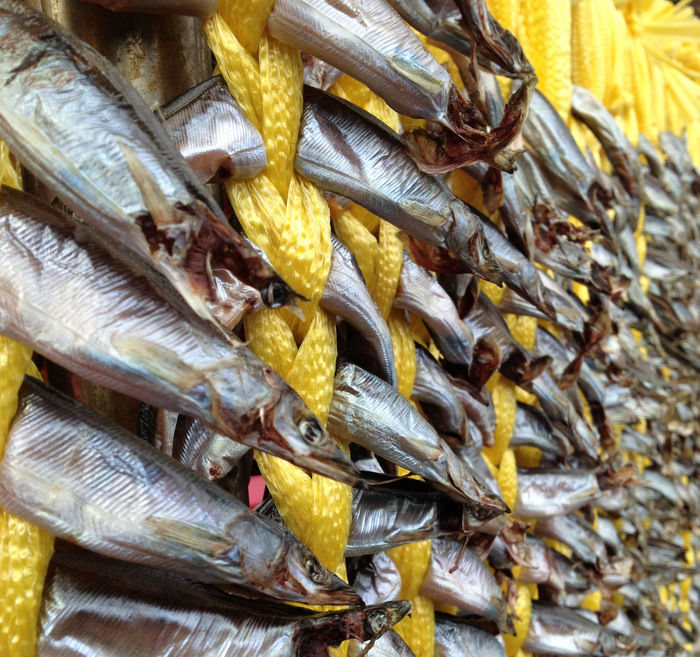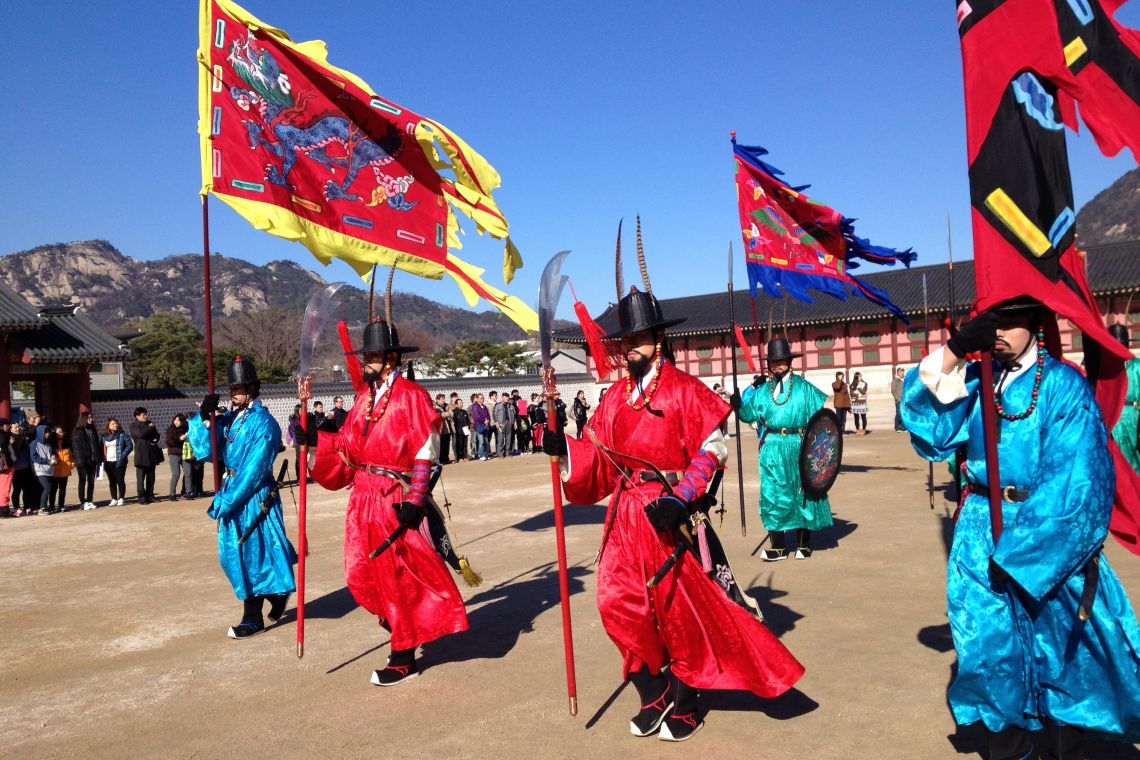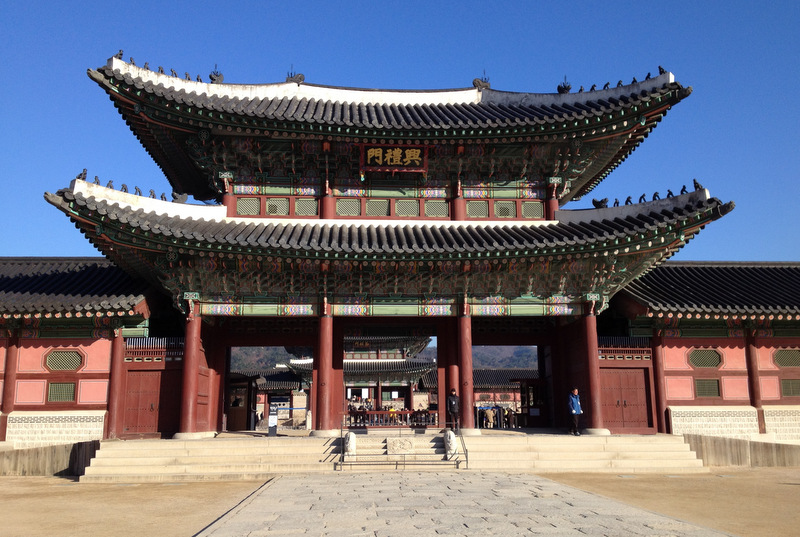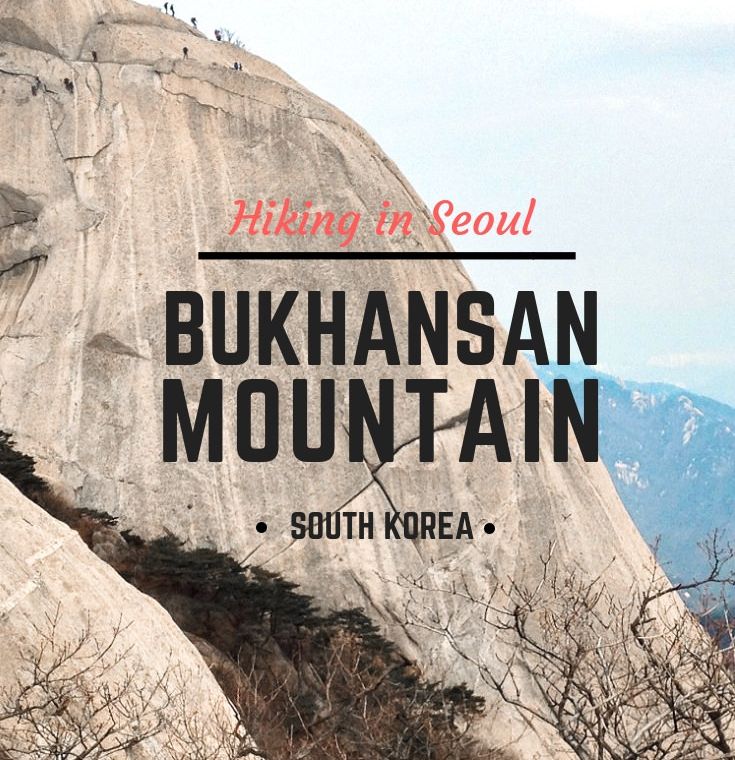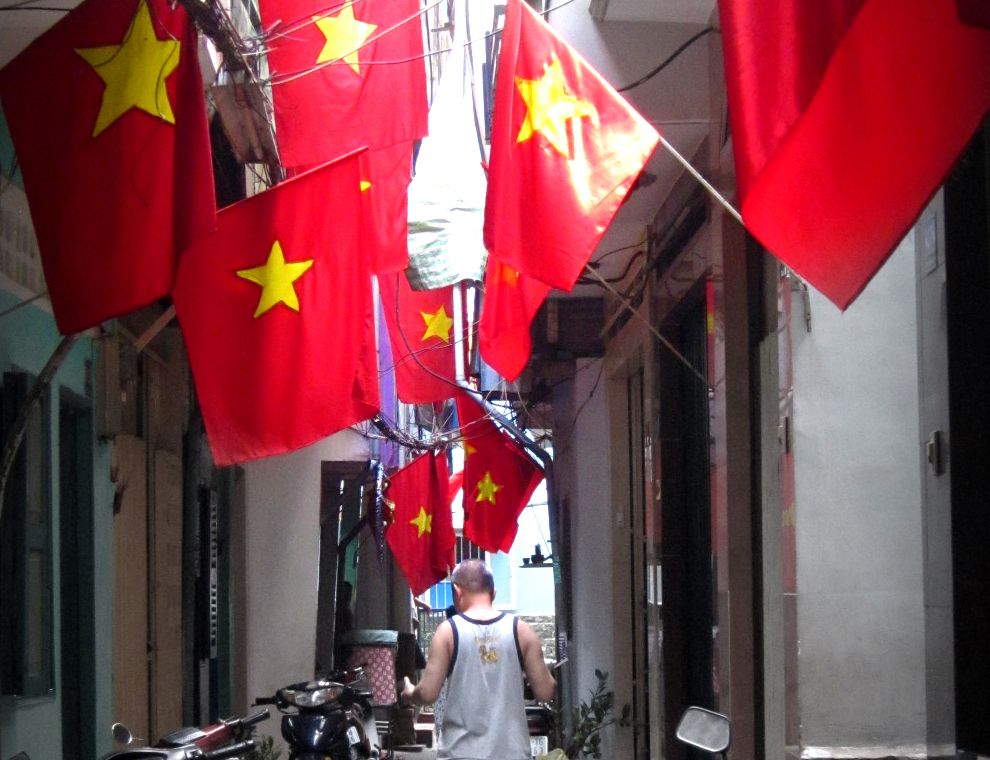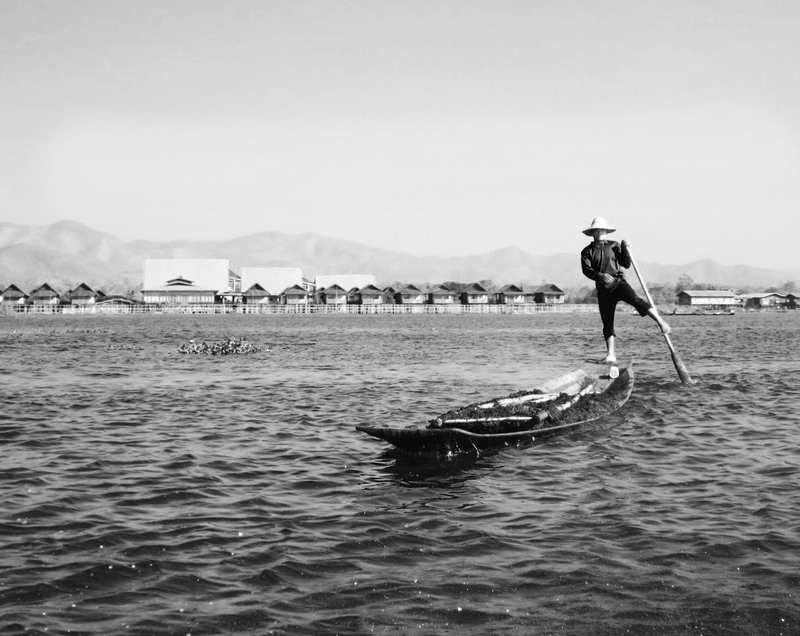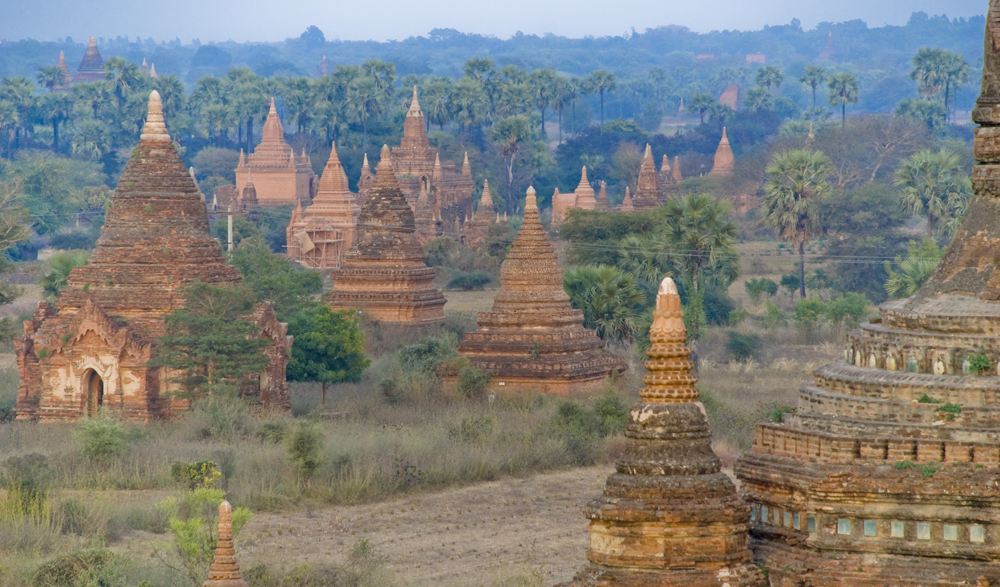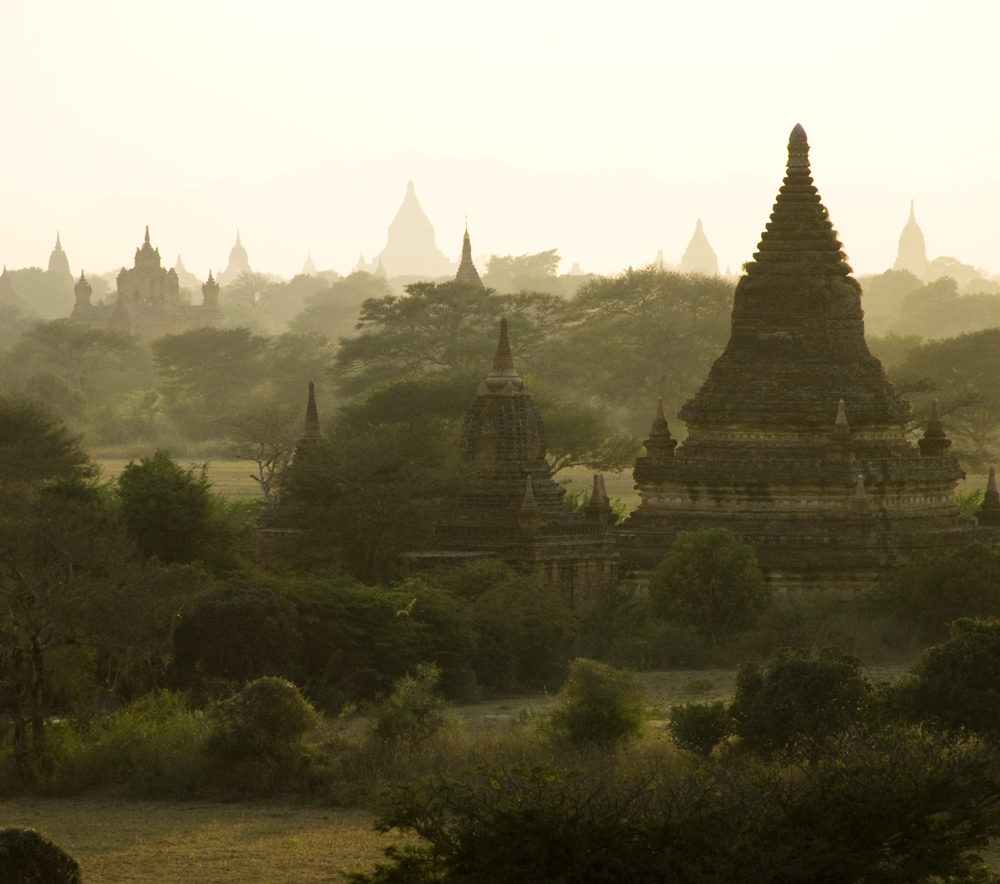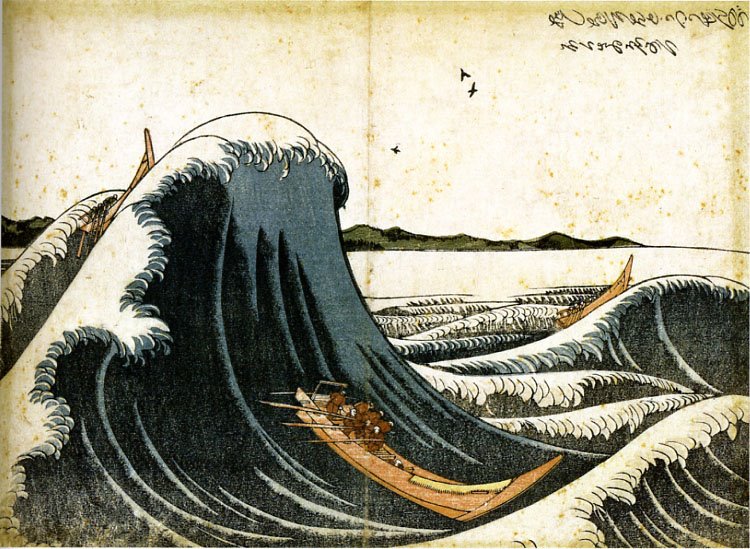This is Sokcho. Down this street by the water, seafood restaurants line the street. I got dragged into one of these restaurants. Quite literally. I took a second too long to decide, the next thing you know my shoes are off and I’m sitting cross legged next to a low table and they’re putting fish on the grill.
So I didn’t know much about Korea before I got there. I had little presumptions, no expectationss. I left Korea thinking, “What an easy country to travel!”
Seoul surprised me. It’s clean, modern, and easy to travel around. It’s anything but seoul-less (sorry, not sorry).
I went to a Korean spa (jjimjilbang) despite my fear of being naked in public. It sounded like a unique enough experience that I should try at least once. I figured, hey, I’ve had a burly Moroccan women mandhandle me when I was at my most vulnerable – I can handle this.
When K, my Couchsurfing host, invited me to go hiking Mt. Bukhansan, I agreed to tag along. “It’s just a small day hike,’ – she said. Climbing Seoul’s highest peak – “How hard can it be?”
There are 3 things I miss when I’m traveling by myself. 2 out of those 3 are cats. Thus it was no surprise that one cloudy Seoul afternoon, I found myself in front of one Seoul’s many cat cafes, waiting for the place to open.
Chiang Mai, Thailand
Chiang Mai Sunday market, held every… well, Sunday, is the mother of all markets. It’s the most touristy and crowded market we’ve ever visited. We loved every minute of it.
Every Sunday night the main street of Chiang Mai was lined with stalls after stalls selling anything from handmade crafts to deeply discounted branded backpacks. The front yards of the wats (the temples) – and there seems at least a wat in every block – are turned into instant food courts crammed with more food stalls than my stomach knew what to do with.
This is what heaven must feel like. To be surrounded with morsels of food (and so cheap) everywhere you look. (Although in heaven, I’d have 4 stomachs like a cow so I could eat 4 times as much).
People come out in droves: tourists and locals alike. By early evening, the speed of the crowd has slowed to snail like.
Then the strangest thing happened..
My brother and I were stuck in this crowd, trying to make our way back when I noticed a crowd of people gathering around a stall. With great effort I elbowed my way through the crowd to see what they were staring at only to be mildly disappointed. They were watching people making smoothies. Wha?
Now that I’m paying a closer attention, the people working behind the booth aren’t even doing that good of a job at it. They look bored, standing around doing nothing. Don’t they realise that there’s a group of people waiting?
Quickly losing interest, I turn around and ran smash into a wall of people. Quite literally. We – as a group of people – have stopped moving and were standing completely, utterly, still.
Wtf?
Just imagine New York Times Square on a weekend night. You’re out and about ogling the orgy of light displays when all of a sudden the thousands of people around you are standing still as if frozen by an invisible light beam of an alien spaceship. Only the movement of their eyes give a hint that there’s life within.
Of course by this time, my brain was whirrring frantically trying to find an explanation to this phenomena.
Is it an alien attack? But no, aliens only attack American cities. Or big cities. I mean, they’d attack Bangkok. But Chiang Mai? No.
The lack of noise was obvious. I didn’t even notice how loud the thoroughfare was until it stopped being so loud. We could only hear the gurgle of static coming out of the loudpeakers spread out throughout the street. It seems that… wait, is it playing a song?
Suddenly everything clicks together. Something I read a while ago comes rushing back from the depth of my memory. They’d play Thai national anthem before every movie in movie theaters and during this time, you’re supposed to get off your butt and stand up to pay respect. The loudspeakers are currently playing the national anthem and this is why everyone has stopped whatever they were doing in the market: to stand up, stay still, and pay respect.
As soon as I realised this, the song ended. As if relased from the spell, everyone went back doing what they were doing before. The smoothie makers go back making smoothie, the shoppers and the vendors go back bargaining, we – as a group – continue inching forward as if the last 10 seconds, when the whole street of Chiang Mai stood still, didn’t happen.
You just have to be there.
I swear, it was the most surreal thing that ever happened.
Did you guess right away what was happening before the end of the post? 🙂
First thing I noticed about Thailand (besides the humidity) was how easy travel became.
Take note that I just arrived from Africa, and by comparison, Thailand (and to lesser degree, its neighbors) felt much more, oh, about a gazillion times much more accommodating to travelers.
Which is why whenever someone asks us, “Where should I go as a first time traveler?” I say – “Thailand” or “South East Asia” then gush about why I ended up falling in love with the region.
It’s Easy to Get Around in South East Asia
In the spirit of making broad generalization – I’d like to say that South East Asia is an easy place to get around. The roads are decent, the border crossings are well documented, and the public transportation options are relatively comfortable and clean.
Although to be honest, after my brother was stuck in a piss-smelling, cramped train compartment in Vietnam for 12 hours – it’s not perfect. But for the most part, they’re…endurable.
But the big reason why it’s easy to get around in SE Asia is because there’s an established infrastructure to ferry backpackers around (see below).
There’s an established backpacker’s trail in South East Asia
This was another thing that came as a pleasant surprise for me. Not the fact that it’s popular with backpackers (I knew that) – but how much I enjoyed what it actually means.

Traveling in a region popular with other backpackers mean everything things are as streamlined and as efficient as it can be. Because thousands of others have walked on the trodden path.
Trying to figure out how to get from Phnom Penh to Vietnam? You’re not the only one who want to do it.
The Thailand, Cambodia, Vietnam, Laos (and to a certain degree, Myanmar) circuit is a well trodden path with few variations. Wherever which way you’re planning to go, most likely others have done it in the past and many others are planning to do so at the same time as you are.
There are many companies who offer transports and there’s plenty of information about the best way to get there (land, river, ocean?), however you want to get there (In a bus, a minivan, a private taxi?), whenever you want to get there (now, next hour, in a few hours?).
Even better, guesthouses in South East Asia can provide you with this information. While in South America and Africa I had to rely more on guidebooks or online. Here, all I had to do was come down to the common area and look at the community board. Oh, the mind boggling options (land, river, ocean? In a bus, a minivan, a private taxi? – you get the gist). All easily arranged through the guesthouse.
South East Asia is cheap, traveling there feels like a vacation
Because your dollar stretches further, the little things that make traveling become so much more than sight seeing – like ducking in for a quick Thai massage, or renting a scooter to drive around an island, or renting a private beach cabin – is affordable.
I had never felt so… rich. I remember thinking to myself, “This is the kind of lifestyle I’ve always wanted to have – but can never afford back in the states.”
Having said that, SE Asia is not as cheap as a lot of people think. This was a sentiment I heard quite a bit from other travelers. I actually found that my daily cost there was about twice as much as South America.
South East Asia people are friendly
Yet another broad generalization. Which I usually hate to make (or hear). But in my limited personal experience, this is true. Especially in Thailand and Myanmar where the locals would get out of their way to help the lost and confused tourists.
Smiles, like humidity and strange looking fruit, was something that come in abundance in South East Asia. Even those who want to rip you off do so with a smile.
Delicious Food
If you like Asian food (or good food, in general), you’ll find that South East Asia is the place to be.
I can go on and on about the variety of food and how easy it is to find food. For me, like many others, having not only good food, but easily accessible good food regardless of what time it is, is almost important as having good wifi. Almost.
When we were traveling South America, food was aplenty, but most of the times it was just ok. It wasn’t bad – but it wasn’t like, “Omg, that trucha frita was to die for!” because fried trout is just… fried trout (in Peru, the food did get better).
In Morocco, I knew there’s more than just tajine, but how come all restaurants only serve tajine? I don’t get it.
Meanwhile, I’d go back to Thailand in a heartbeat just for the food and I know my brother would love to go back to Vietnam for some awesome pho.
(Here Jack would like to add that Tokyo is still his favorite foodie place – and I’d like to add, “Japan doesn’t count. It’s not even in South East Asia.)
Cheap, cheap, cold beer
Yes Asia can be hot and humid. But Asia is also the land of 50 cent draught beer. Brilliant!! Yes, some of them taste like water buffalo’s piss – but here’s my beer recommendation (not all available as draught): Beer Lao (Laos and Thailand), Angkor (Cambodia), Larue (Vietnam), Batavia Lager or Anker (Indonesia).
Wifi Is Everywhere
You won’t have an internet withdrawal syndrome. I think it’s partly because it’s so popular with the younger crowd, the South East Asia gringo trail is well served with wifi. It’s widely available in coffeeshops and honestly, finding a guesthouse that does not have wifi might as well be the more challenging task.
For first time backpackers, this will definitely ease the anxiety of being away in a foreign land. Plus, how else can you brag about your travels other than uploading all of your pictures on Facebook?
English is Widely Spoken in South East Asia
With the exception of Vietnam, we found that we could get by with only knowing English. Which is great, because even though I always strive to learn the basic words in local language, the tonal language and the crazy characters are daunting.
South East Asia is Safe (with regular precautions)
Because South East Asia is so popular with backpackers, and because there’s a big disparity between our purchasing power and that of the locals – the region is also rife with scams. Some of them are pretty creative ones, like the fake embassy on Thailand – Cambodia border, to the “the temple is closed, come with me on a shopping spree” in Bangkok.
Fortunately, most scams are harmless. And regardless of how you feel about bribes, know that in most situations, a little bribe can go a long way in smoothing them out.
There will be some unexpected things that don’t go as planned.
But in a way, that story would be much more interesting than “We went to see this tourist site and everything went very well according to plan.” If you and I ever meet in person, ask me about Ethiopia. Or Vietnam. Boy, do I have stories to tell you.
—
I never planned to go traveling in South East Asia. The opportunity just presented itself and I took it with the, “Well, might as well” attitude. But I surprised myself by how much I enjoyed my time there and I think it was mostly because how accommodating everything was.
So yes, I have no reservation in recommending first time travelers to go backpacking South East Asia. Or even seasoned travelers. It’s easy enough, but with a dash of challenges thrown in to make it exciting. I personally can’t wait to take Jack to Thailand. I know he’d love it there.
Do you agree? Where do you think first time backpackers should go?
Inle Lake, Myanmar
The most iconic image of Inle Lake, a large freshwater lake in the middle of Myanmar, is of its fishermen.
They are known for their conical fish trapping device and their unique way of rowing – one hand on the top of the oar and one leg wrapped around the bottom. Then, with a swivel of the hip, the boat magically moves forward.
You have to be see for yourself to appreciate it 🙂
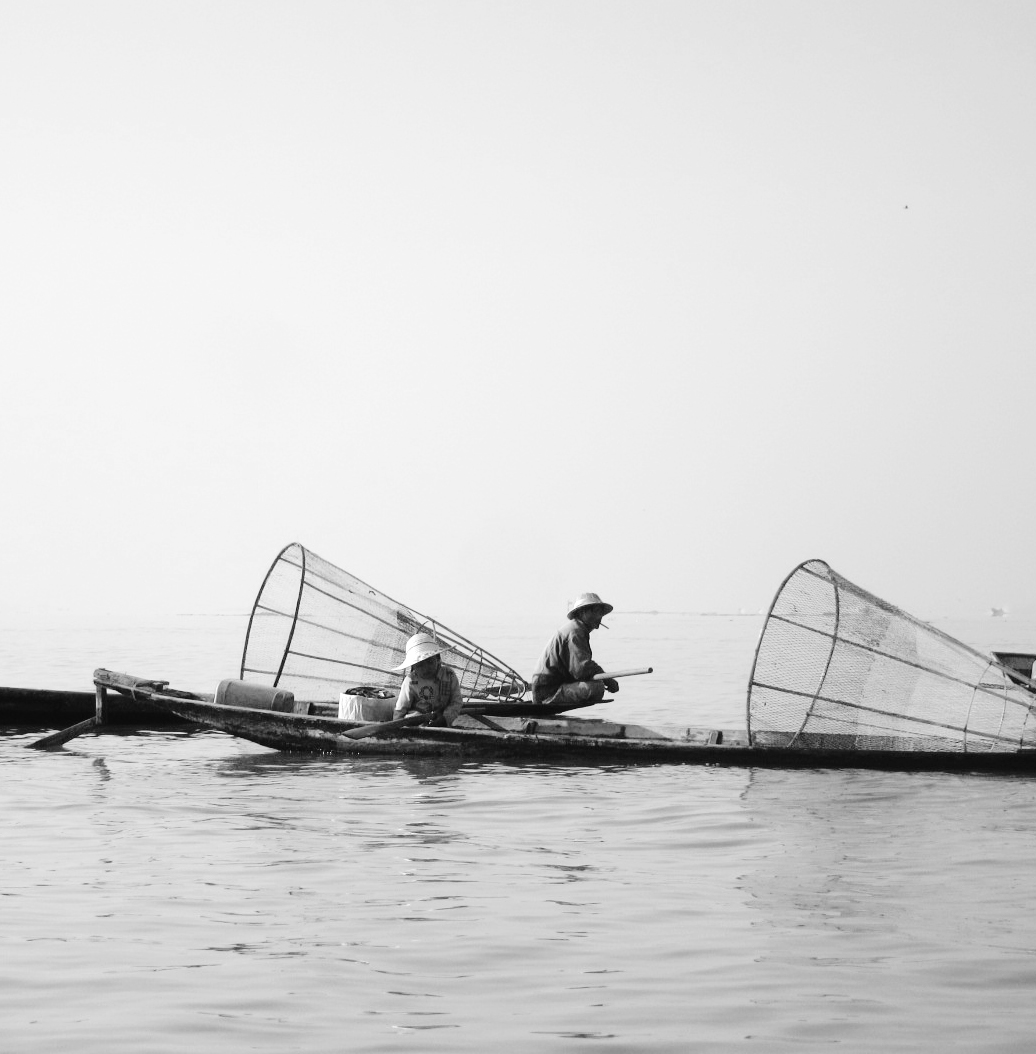
The fishermen of Inle have developed this unique way of rowing standing up so they could see over the tall reeds growing in proliferation around the lake.
The best way to see the lake is by renting one of the many motor-powered long boats. Along with visits to handicraft workshops, most of them were just kind of ‘meh’, we also visited the village where the market happened to be that day.
The traditional market around Inle is run on a 5-day rotation basis as it visits a different village around the lake each day. Even though it’s getting more popular with tourists, it was still largely traditional.
I always love going to the local markets. It’s a good place to see the local produce (lots of fish), try the local food (mushy tofu, anyone?), the local snack (delicious sambusas), and observe people of different tribes coming in to do their weekly shopping.
Around Inle, the most distintive looking of these tribes is the Pa-O, with its women wearing orange towels wrapped around their heads.
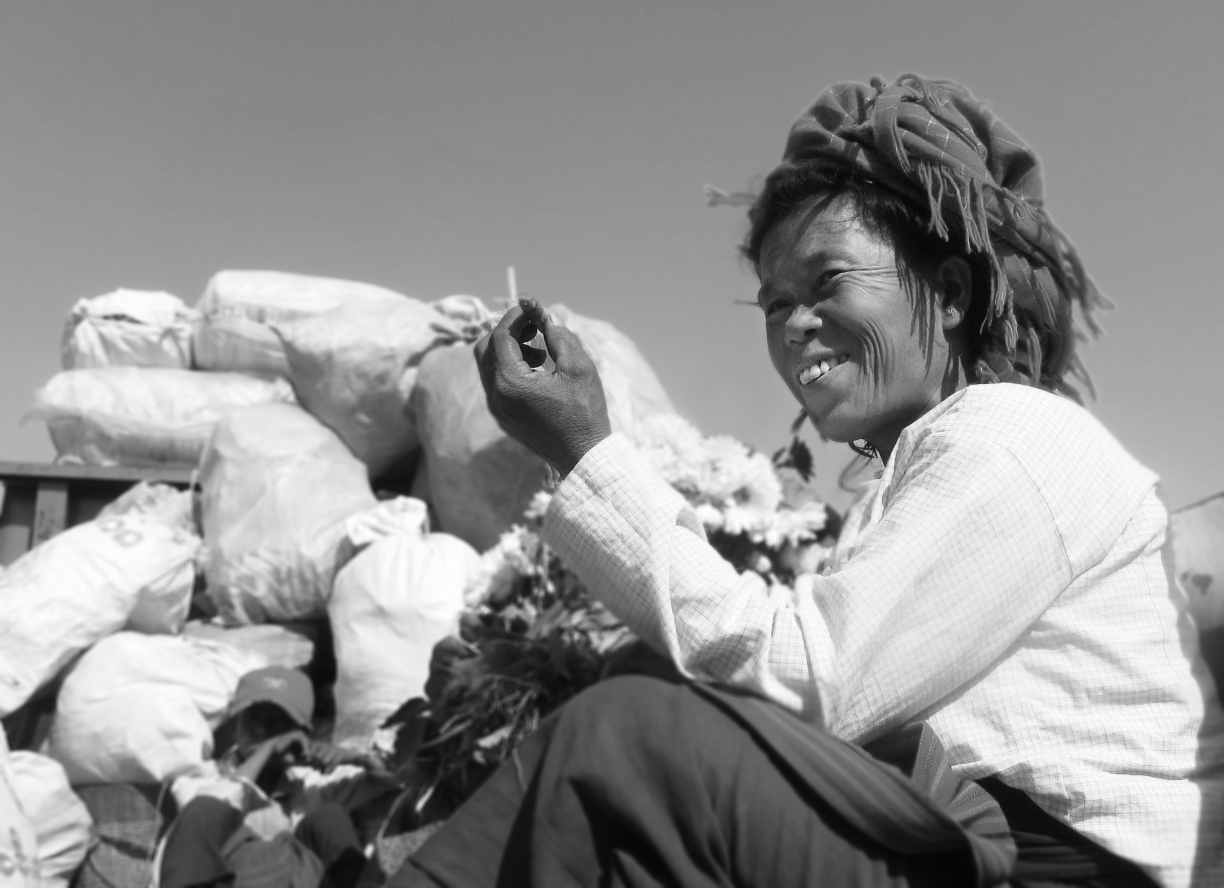
Incidentally, the market also provided a good opportunity to see what Burmese kids were allowed to play with.
These 3 kids were playing nearby the market with leftover veggies. “How cute,” I thought, “They’re pretend cooking.” Until I realised they using naked razors as their “toy” knives.
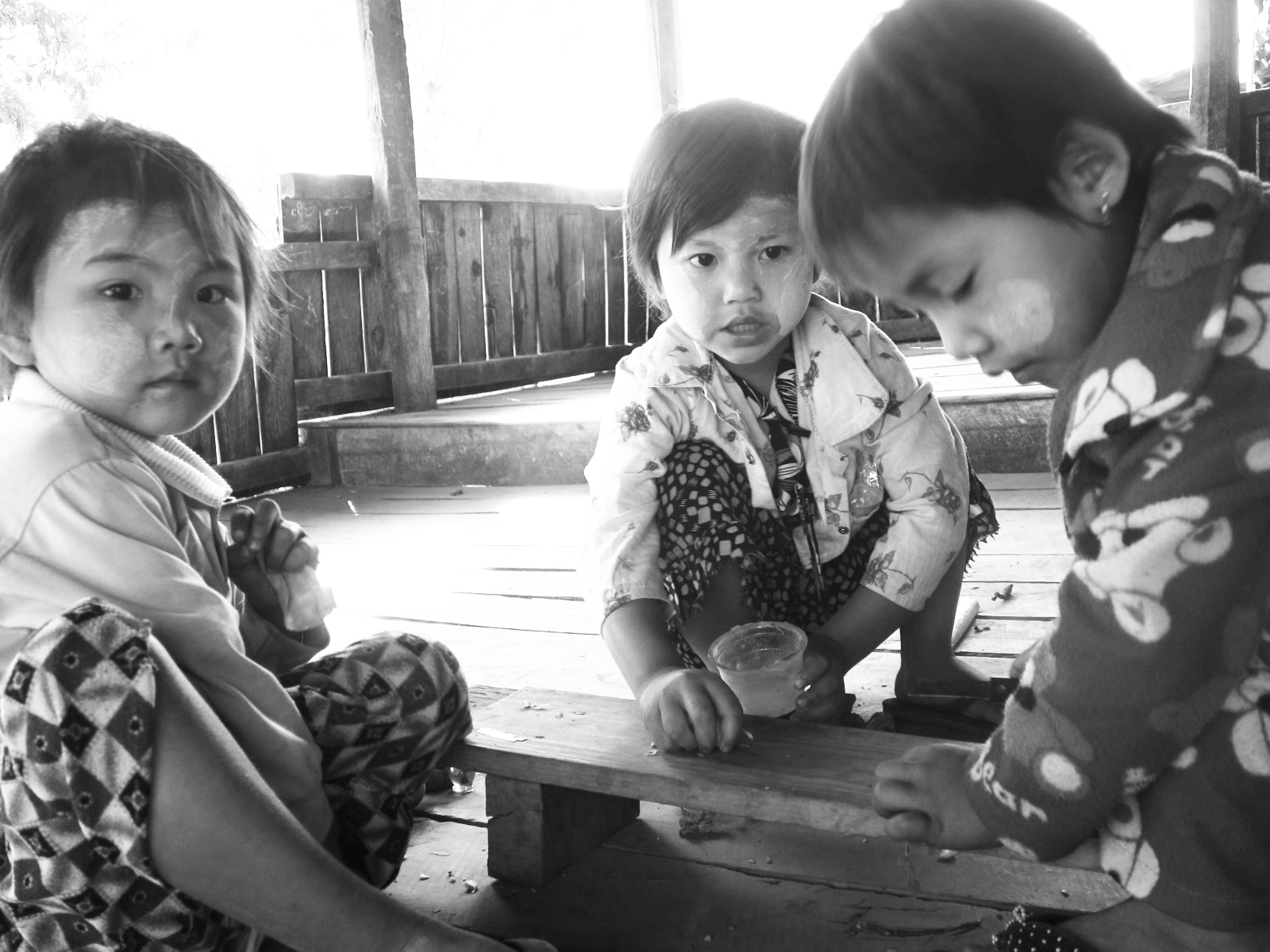
What was most interesting was seeing these villages that exist inbetween the two worlds: land and water. Inle Lake is a marshy lake with no definite “this is where the lake starts”. The land just slowly gets soggier and soggier as you try to get closer to it.
These villages are built on the parts of solid land that jut out into the lake and are interconnected by bridges and waterways. Visiting these villages, I realised how rowing standing up would be an advantage. You can easily get lost in this watery world.
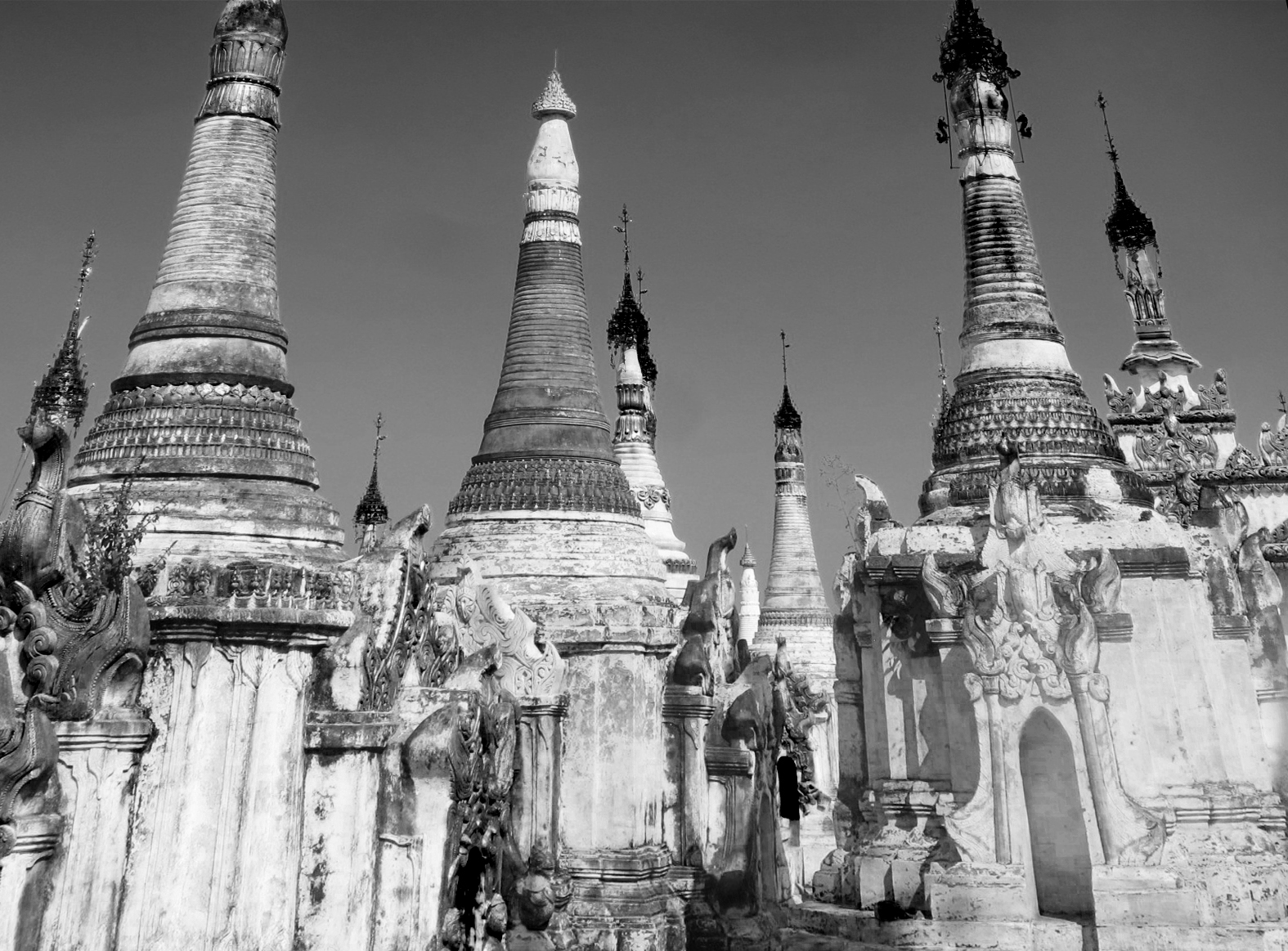
Riding on our boats through one narrow channel after another we passed beautiful traditional wooden houses on stilts, vegetable gardens magically floating over water tended lovingly by their owners perched over their boats, numerous temples and monasteries. I couldn’t help but be fascinated.

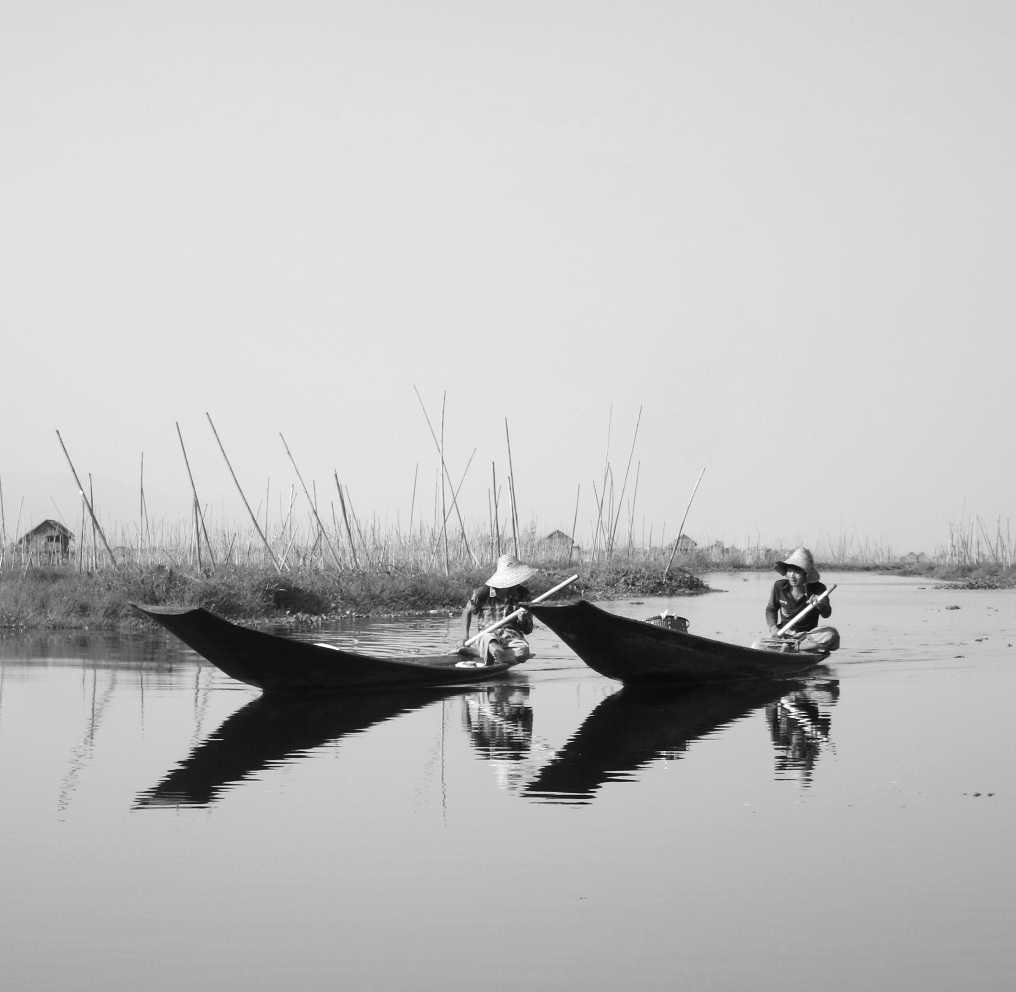
Alternatively, you can also explore Check out Inle Lake by bike.
Inle Lake was truly a different world.
—
A boat tour should cost around 25000 Kyats per boat.
Where to eat in Nyaungshwe: the market in the center of town for traditional food, Mimi’s Cafe for strawberry lassie (they also have good bikes to rent).
Bagan, Myanmar
There’s a photo on the inside cover of our Myanmar guidebook. It shows a landscape dotted with temples as far as the eyes could see. Ever since I saw that, I’d wanted to come to Bagan and see it for myself.
Fast forward to short while after, we arrived in Bagan.
We arrived at 3 in the morning in the dark and deserted bus station. All the locals immediately got off and disappeared into the darkness, leaving behind a handful of sleepy, confused tourists still on the bus. We weren’t scheduled to arrive until 5 am.
“This can’t be it. We have 2 more hours to go,” we said to each other. I even turned around and got ready to go back to sleep.
But the bus driver came back up, “This is Bagan. The bus goes no more.”
And that was how we arrived in Bagan. As soon as got off the bus, the horse cart drivers descended upon us. Stumbling in darkness with our stuff, rubbing sleep off our eyes, and being pursued by horse cart drivers wasn’t a welcome we had in mind.
(Btw, Bagan is so small we got together with other tourists and ended up walking to where all the guesthouses were.)
But in the end, it was all so worth it.
The Temples of Bagan
Later on that day, we rented a horse cart to take us to see the famous temples of Bagan. Individually, they are not as intricate as Angkor temples but I like these temples in Bagan so much better.

For one, they’re almost completely deserted. Almost eerily so. We didn’t have to compete with busloads of sweaty tourists, jostling elbows to get inside.
As a matter of fact, some of the people we jostled elbows with were the locals. Some of these Bagan temples are being used daily as a place of worship so we got to see how much religion played in the daily life of the Burmese people.

And lastly, they are just so many of them. So, so, so many.
Seeing the sun setting over dozens, no hundreds, of temples dotting the grassy landscape of Bagan was probably one of the most amazing sights I’d seen. My brother and I climbed up one of the temples and simply enjoyed the view. It was one of truly unique landscapes I’d ever seen. How did I get so lucky?
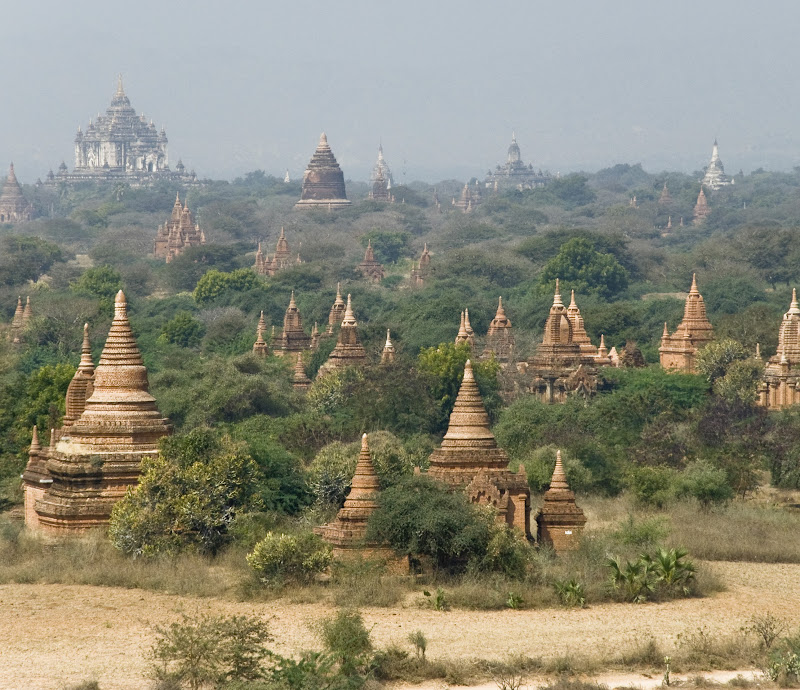
I was utterly enchanted.
I was afraid I’d be disappointed in the real thing after seeing the postcard perfect version. But in Bagan, the real thing was so much better.
See more pictures from this amazing place.
Bagan, Myanmar
How to get to Bagan from Yangon: Bagan is about 10 hour ride from Yangon (15000 Kyats). Buses leave from a bus station 45 minutes away from center of Yangon. Far from ‘bus from hell’ experience, it was a decent, air-con bus and the road was paved all the way.
Where to stay in Bagan: Just like everywhere in Myanmar, there’s a shortage of guesthouses at that time. Booking ahead is recommended. We stayed in May Kha Lar guesthouse. It was decent.
When my 18 year old brother with his freshly minted driver license suggested that we rented a car to visit the golden triangle region in northern Thailand AND offered to do the whole drive himself – it took me a split second to decide that it was the most brilliant idea, ever!
My mom was throwing up on the side of the boat, our guide standing by her side holding on to her just in case she got thrown off the boat. All around us the water of Sunda Strait, the stretch of water separating Java and Sumatra, was bucking in giant swells.

